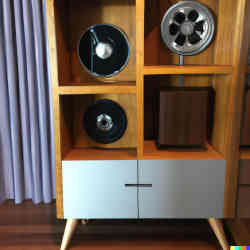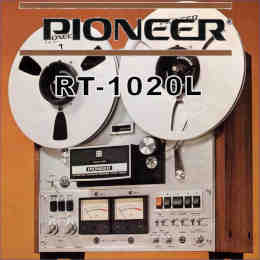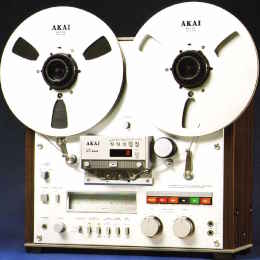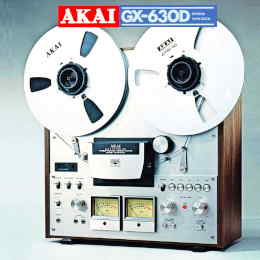Introduction

When it comes to storing my record collection and reel-to-reel tapes, I'm a big fan of mid-century modern (MCM) style furniture. I love the clean lines, minimalist design, and functionality of MCM pieces, but I've been struggling to find examples of how reel-to-reel media was traditionally stored.
While there are plenty of resources online for organizing and storing vinyl records, reel-to-reel tapes seem to be somewhat of a forgotten medium. However, I'm determined to find a solution that works for me.

After doing some research, I've come across a few ideas for storing and organizing reel-to-reel tapes. One option is to use a vintage storage cabinet designed specifically for reel-to-reel tapes. These cabinets often feature pull-out drawers that can accommodate multiple tapes, and they have a retro look that fits in nicely with MCM decor. Another option is to use a bookshelf or media console with adjustable shelves. This allows me to customize the spacing between shelves to fit the height of my reel-to-reel tapes. I can also mix and match with my vinyl records to create a cohesive storage solution.
There may not be as many resources available for organizing and storing reel-to-reel tapes, there are still plenty of options to consider. I'm excited to experiment with different solutions and find the one that works best for me and my collection.
Reel-to-Reel Media collections
Collecting reel-to-reel media is a niche hobby that has a dedicated following among audiophiles, music lovers, and vintage technology enthusiasts. While it may not be as widespread as vinyl record collecting, there are still many individuals who appreciate the unique sound and nostalgia of reel-to-reel tapes. Reel-to-reel media can be a unique and interesting hobby that allows you to explore a wide range of music and other audio content that may not be available in digital formats. It can also be a great way to connect with the past and experience music as it was originally intended to be heard.

EMI TAPElabel that fell off one of my reels
The importance of proper storage to preserve the quality and longevity of these vintage treasures can not be over stated. Over the years, I have explored various storage options for my collection, including commercial storage solutions and DIY options. In this article, I will provide an overview of these storage solutions and the pros and cons of each, as well as cost considerations.
There is a variety of storage options available for reel-to-reel media collections, including commercial storage solutions and DIY options. Each option has its own pros and cons, and cost considerations should be taken into account when making a decision. Regardless of the storage option chosen, it is important to prioritize the preservation of the collection to ensure its longevity and quality for years to come.
When considering storage options for your reel-to-reel media collection, cost is an important factor to consider. Commercial storage options can be expensive, with some containers costing hundreds of dollars. DIY storage solutions can be more cost-effective, but may require purchasing materials and investing time and effort into building or repurposing items.

Reel-to-Reel Media Storage Options
It is important to remember that the cost of storage is an investment in the preservation of your collection. Proper storage can help prevent damage and deterioration of your tapes, ensuring their longevity and quality. When making a decision on storage options, it is important to weigh the costs against the benefits and select the option that best meets your needs and budget.
Commercial Storage Options
One option for storing reel-to-reel media is to use commercial storage solutions. There are several companies that offer specialized storage containers designed specifically for reel-to-reel tapes. These containers are typically made of sturdy materials and offer protection from environmental factors such as dust and humidity. Some commercial storage options even offer temperature control to prevent warping or melting of the tapes.
One advantage of using commercial storage options is the peace of mind knowing that your collection is being stored in a secure and protected environment. These containers are designed to prevent damage and deterioration of the tapes, and can be especially beneficial for those living in areas with extreme temperatures or high humidity. Another advantage is the convenience of not having to build or assemble anything, simply purchase the container and store your tapes. However, commercial storage options can also be expensive, with some containers costing hundreds of dollars. Additionally, the containers can take up a significant amount of space, which may be a concern for those with limited storage space.
DIY Storage Solutions
Another option is to create your own DIY storage solutions. This can be a cost-effective way to store your collection, as well as a fun project for those who enjoy DIY projects. Some popular DIY storage options for reel-to-reel media include repurposing old suitcases or trunks, building custom wooden storage shelves, or using plastic storage containers with added protection such as foam inserts.
DIY storage solutions can be a more cost-effective option, as well as a fun and creative project for those who enjoy building or repurposing items. Custom wooden storage shelves, for example, can be built to fit any space and can be designed to match the décor of the room. Repurposing old suitcases or trunks can add a unique vintage feel to your storage solution. However, DIY storage solutions may not offer the same level of protection as commercial storage options. Depending on the materials used, they may not provide adequate protection from environmental factors such as humidity or dust. Additionally, DIY solutions may require some level of woodworking or construction knowledge, which may not be feasible for everyone.
Cabinet Design Requirements
1. Capacity and Organisation
- Store standard reel sizes (e.g., 7-inch and 10.5-inch reels).
- Allow clear labeling or viewing of reels for easy identification.
- Include adjustable shelves or dividers for different reel sizes.
2. Material Considerations
- Use high-quality, non-acidic wood (e.g., oak, maple) or metal for durability.
- Interior materials should be non-off-gassing to avoid damage to tapes.
3. Aesthetic Features
- Vintage-inspired or modern design, depending on user preference.
- Natural wood finishes or sleek, minimalist coatings.
4. Preservation Features
- Maintain a stable environment for tape longevity (avoid heat, humidity, and light exposure).
- Consider ventilated panels or small fans to prevent heat buildup.
5. Accessibility
- Easy pull-out drawers or roll-out trays for convenience.
- Smooth-glide mechanisms to prevent accidental damage.
6. Dimensions
- Modular sections to fit typical tape collection sizes and future expansions.
- Depth to match standard tape reel thickness.
Concept Design (suggestion only)
1. Dimensions
- Height: 183 cm (tall unit) or 91 cm (console-style unit).
- Width: 91 cm.
- Depth: 30–35 cm (to accommodate reel thickness and airflow).
2. Material
- Frame: Solid wood (oak, maple) or powder-coated aluminum for stability.
- Shelves: Laminated MDF with protective, non-off-gassing coating.
- Back Panel: Perforated plywood for ventilation.
3. Structure
- Top Section: Display shelf for frequently used reels or decorative items.
- Middle Section: Adjustable shelves with grooves for holding 18 cm (7-inch) and 26.5 cm (10.5-inch) reels upright.
- Bottom Section: Pull-out drawers for storing reels in protective cases or accessories (e.g., splicing blocks, leader tape).
4. Aesthetic Features
- Rounded corners for a vintage appearance or clean lines for modern styling.
- Finish: Walnut veneer, matte black, or natural oak.
- Hardware: Brass handles or brushed nickel.
5. Preservation Enhancements
- UV-protected glass doors on the middle section.
- Felt-lined interiors to prevent scratches.
- Soft LED lighting inside.
Optional Add-Ons
- Integrated Lighting: Soft LED lights with minimal heat emission for visibility.
- Lockable Sections: For securing rare or valuable tapes.
- Cable Management: Discrete compartments for cables, adapters, or small reel-to-reel players.
Risks to storing reel-to-reel media
Storing reel-to-reel magnetic media carries several risks, including:
- Demagnetization: The magnetic tape in reel-to-reel media can become demagnetized over time, causing loss of data and sound quality.
- Moisture damage: Excessive humidity or exposure to water can cause the magnetic tape to swell or stick together, which can lead to permanent damage.
- Temperature fluctuations: Extreme temperature changes can cause the magnetic tape to expand or contract, leading to tape stretching or breakage.
- Dust and debris: Dirt and debris can clog the tape and lead to skipping or distortion in sound quality.
- Improper storage: Storing reel-to-reel tapes improperly can cause the reels to warp, which can damage the tape and make it difficult to play.
To minimize these risks, it is important to store reel-to-reel media in a clean and dry environment, away from direct sunlight and heat sources. Additionally, the tapes should be handled with care to avoid any physical damage to the reels or tape itself.
Summary
The storage of reel-to-reel media is an important aspect of maintaining and preserving these valuable recordings. There are a variety of storage options available, including commercial products and DIY solutions. Each option has its own pros and cons, and the right choice will depend on individual needs and budget. Whether you choose a professional storage solution or a DIY approach, it's important to prioritize proper storage and handling techniques to ensure the longevity and quality of your reel-to-reel media collection. With the right storage and care, your reel-to-reel tapes will continue to provide enjoyment for years to come.



